You might be surprised to learn that panic attacks can affect children, often showing up in ways you wouldn't expect. If you notice signs like intense fear, withdrawal from friends, or even physical symptoms such as a racing heart, it's essential to pay attention. These behaviors can signal deeper issues that, if left unaddressed, may lead to more significant challenges. So, what can you do to help your child navigate these tough moments? Let's explore some effective coping strategies and warning signs that can make a difference.
Understanding Panic Attacks
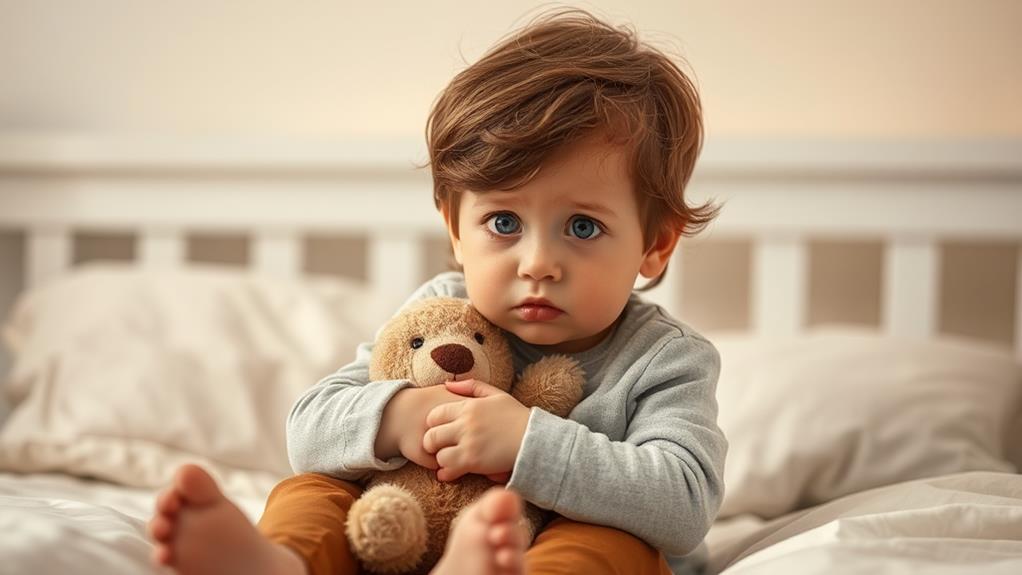
Panic attacks can feel overwhelming, especially for children who mightn't fully understand what's happening. They often experience sudden and intense feelings of fear or anxiety, which can lead to physical symptoms like a racing heart, shortness of breath, or dizziness. You may notice your child feeling like they're losing control or even having a heart attack, which can be frightening for both of you.
Understanding panic attacks involves recognizing that they can occur without any clear reason. Sometimes, a child might feel perfectly fine one moment and then suddenly become distressed. This unpredictability can add to their anxiety. It's important to remind your child that these feelings, while intense, aren't dangerous and will pass.
Encouraging them to focus on their breathing can help. Taking deep breaths in and out can calm their racing heart and help them regain control.
You can also create a safe space where they feel comfortable expressing their feelings. By fostering open communication, you'll help your child understand that it's okay to talk about their fears. This understanding can empower them to cope better when panic attacks occur, making the experience less daunting.
Common Triggers in Children
Many factors can trigger panic attacks in children, often leading to unexpected episodes of fear and anxiety. One common trigger is stressful situations, like starting a new school, moving to a new home, or even taking a test. These changes can overwhelm your child, making them feel anxious and fearful.
Social situations, such as speaking in front of classmates or attending a party, can also cause panic.
Another significant factor is the fear of losing control. Children might worry about their reactions in different situations, leading to increased anxiety. Additionally, witnessing or experiencing traumatic events can create lasting fears that may trigger panic attacks later on.
Sometimes, even physical factors like lack of sleep or poor nutrition can contribute to anxiety levels. If your child is feeling unwell or overtired, they may be more susceptible to panic.
Lastly, family dynamics, such as parental stress or conflict, can impact a child's emotional well-being, causing feelings of insecurity or fear.
Physical Symptoms to Watch
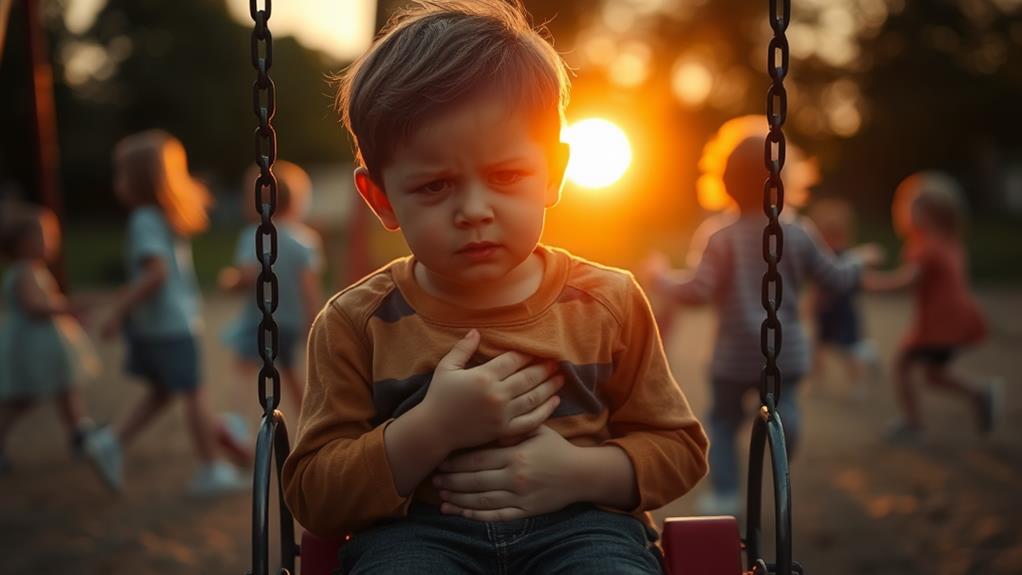
When a child experiences a panic attack, they may exhibit various physical symptoms that can be alarming for both the child and their caregivers. It's essential to recognize these signs early, as they can help you provide the necessary support.
One common symptom is rapid breathing, which might make the child feel like they can't catch their breath. You may also notice their heart racing or pounding in their chest, creating a sense of urgency.
Sweating is another physical response, often accompanied by trembling or shaking. Some children might complain of feeling dizzy or lightheaded, which can be quite frightening for them.
They might even report a feeling of choking or tightness in their throat, leading to increased anxiety. Abdominal pain or nausea can also occur, causing discomfort that can be mistaken for other issues.
Lastly, it's not uncommon for children to feel hot or experience chills during a panic attack. Being aware of these symptoms can help you respond effectively and reassure your child.
Emotional Responses to Fear
Alongside the physical symptoms, emotional responses to fear can significantly impact a child's experience during a panic attack. When your child faces intense fear, they might feel overwhelmed by emotions like dread, helplessness, or even terror.
These feelings can lead to confusion and a sense of losing control, making it tough for them to cope. You may notice your child becoming unusually anxious, irritable, or withdrawn. They might express feelings of impending doom or fear of dying, which can be frightening for both of you.
It's essential to recognize that these emotional responses are valid and real for your child, even if they seem exaggerated to you. Encouraging your child to talk about their feelings can help them process these emotions. Validating their experience without judgment is crucial; let them know it's okay to feel scared.
Simple breathing exercises or grounding techniques can also offer immediate relief. Remind them that they're not alone in this, and you're there to support them. By understanding these emotional responses, you can help your child develop healthier coping strategies, making it easier for them to navigate future panic attacks.
Behavioral Changes to Notice
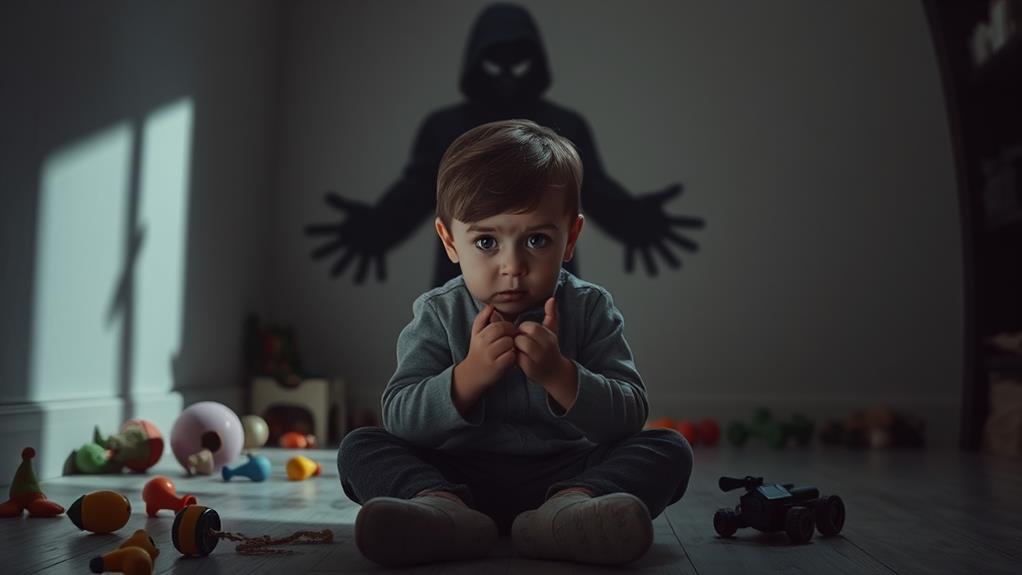
It's important to watch out for behavioral changes in your child during and after a panic attack. These changes can often be subtle but significant. You might notice that your child becomes more withdrawn, avoiding social situations they once enjoyed.
They may also display increased irritability or frustration, making it hard for them to cope with everyday situations.
Another sign to look for is a change in their sleep patterns. If your child suddenly struggles to fall asleep or frequently wakes up during the night, it could be a result of anxiety stemming from their panic attacks.
Additionally, you might see them clinging more to you, seeking reassurance when they feel overwhelmed.
Some children might start to avoid specific places or activities that remind them of their panic attacks, which could limit their experiences.
It's crucial to observe these changes, as they can impact your child's overall well-being. By recognizing these signs early, you can help them develop coping strategies and seek support if needed.
Difficulty in Concentration
Difficulty concentrating can be a common challenge for children experiencing panic attacks. When your child feels overwhelmed by anxiety, focusing on tasks, whether in school or at home, may seem impossible. You might notice them staring blankly at homework or struggling to remember simple instructions. This mental fog can be frustrating for both of you.
It's essential to understand that their mind is racing, often consumed by worry and fear. During a panic attack, the body goes into fight-or-flight mode, redirecting energy away from cognitive tasks. As a result, your child may find it hard to keep track of what they're doing, leading to careless mistakes or incomplete assignments.
To help improve concentration, create a calm environment free from distractions. Encourage your child to take short breaks when they feel overwhelmed. Practicing mindfulness techniques, like deep breathing or visualization, can also help refocus their thoughts.
Additionally, maintaining a consistent routine may provide them with a sense of stability. A supportive approach can make a significant difference, reminding your child that it's okay to ask for help when they're struggling to concentrate.
Together, you can navigate this challenging experience and build their confidence.
Changes in Sleep Patterns
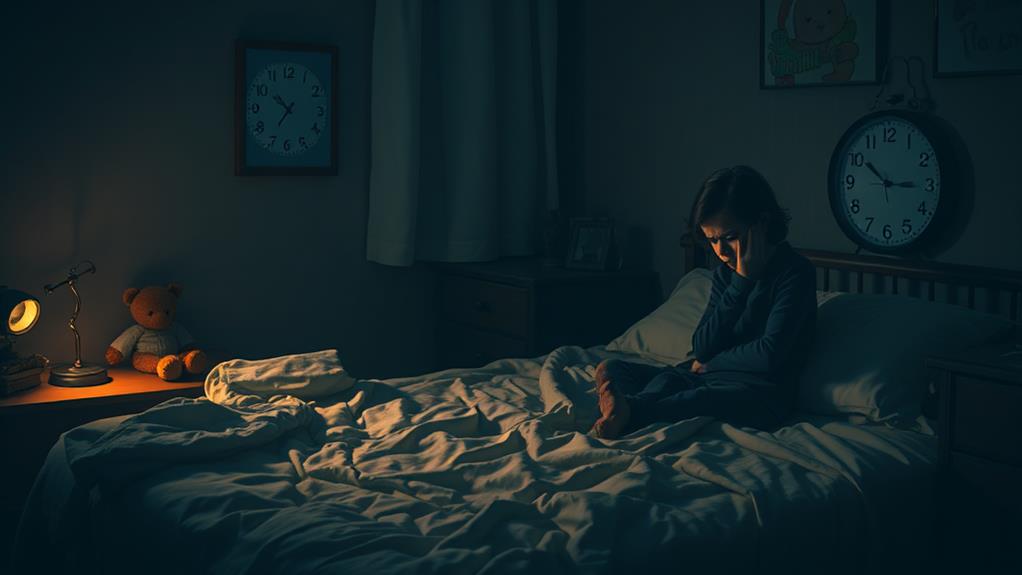
Panic attacks can significantly disrupt your child's sleep patterns, leading to insomnia or restless nights. When your child experiences anxiety, they might have trouble falling asleep or staying asleep. You may notice them tossing and turning, or waking up frequently during the night. These sleep disturbances can leave your child feeling tired and irritable during the day, which can further intensify their anxiety.
It's essential to pay attention to any changes in your child's sleep habits. If they suddenly want to avoid bedtime or express fear about sleeping alone, these could be signs that panic attacks are affecting their rest.
Establishing a calming bedtime routine can help. Encourage activities like reading, gentle stretching, or listening to soothing music before bed.
Additionally, creating a comfortable sleep environment—like keeping the room dark and cool, or using a nightlight—can help ease their fears.
If these strategies don't seem to work, it might be a good idea to talk to a pediatrician or a mental health professional. They can provide further support and guidance tailored to your child's needs, helping them find ways to cope with anxiety and improve their sleep.
Social Withdrawal Signs
Sleep disturbances often accompany anxiety, leading to noticeable changes in a child's social behavior. If you've noticed your child pulling away from friends, it might be a sign of social withdrawal linked to anxiety. They may start declining invitations to playdates or avoid group activities they once enjoyed.
You might even see them spending more time alone, preferring their room over socializing with family or peers. As their anxiety grows, they might also become more irritable or easily frustrated, which can push friends away.
It's common for children to experience feelings of loneliness during this time, even if they're physically present in social settings. Sometimes, they may display signs of nervousness when interacting with others, like fidgeting or avoiding eye contact.
Encouraging open dialogue can help. Ask your child how they feel about social situations, and listen without judgment. It's essential to create a safe space for them to express their thoughts.
Engaging them in fun, low-pressure activities can also help ease their anxiety and gradually reintegrate them into social circles. Observing these signs early can make a significant difference in their ability to connect with others.
Impact on School Performance
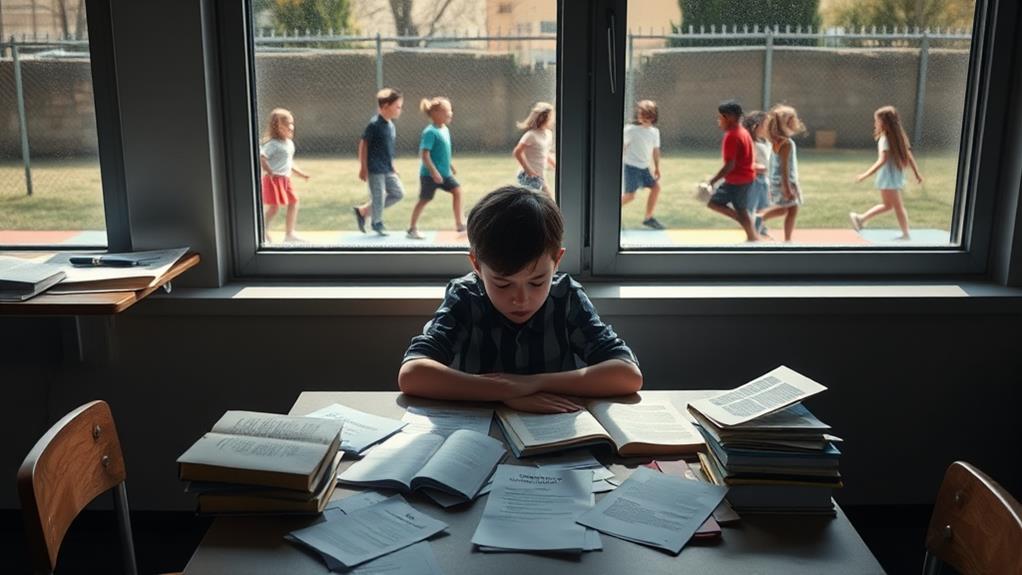
Anxiety can significantly affect a child's school performance, often manifesting as declining grades or a lack of focus during lessons. When kids feel anxious, they might struggle to pay attention, leading to missed instructions and important information. This distraction can make even familiar tasks seem overwhelming, causing frustration and further anxiety.
You may notice your child becoming easily fatigued or stressed about homework or tests. They might procrastinate or avoid assignments altogether, fearing they'll perform poorly. This cycle can lead to a dip in confidence, making it even harder for them to engage in class activities.
Additionally, social anxiety can make participation in group projects or discussions feel daunting. Your child might withdraw from interactions, missing out on valuable learning experiences.
If you see these signs, it's essential to communicate openly with your child, encouraging them to express their feelings.
Consider collaborating with teachers to create a supportive environment. They can help by providing accommodations, such as extra time on tests or a quiet space for assignments.
Unexplained Stomachaches
Many children experience unexplained stomachaches, which can often be linked to their emotional state rather than a physical illness. You might notice your child complaining of stomach pain, especially during stressful situations like tests or social gatherings. While it's easy to assume they've a tummy bug, these aches may stem from anxiety or nervousness.
When kids feel overwhelmed, their bodies react in ways that can manifest as physical symptoms, including stomachaches. This connection between mind and body is important to understand. You may find that your child's discomfort appears during moments of stress, like before school or after a tough day.
Listening to your child's feelings can be essential. Encourage them to share what's bothering them. Sometimes, just talking about their worries can alleviate the stomach pain.
It's also helpful to observe patterns. If the stomachaches happen consistently in certain situations, it may point to an underlying issue that needs attention.
Being aware of these signs can help you support your child better. Remember, while it's crucial to consult a doctor if the pain persists, understanding the emotional triggers can lead to effective solutions.
Coping Strategies for Parents
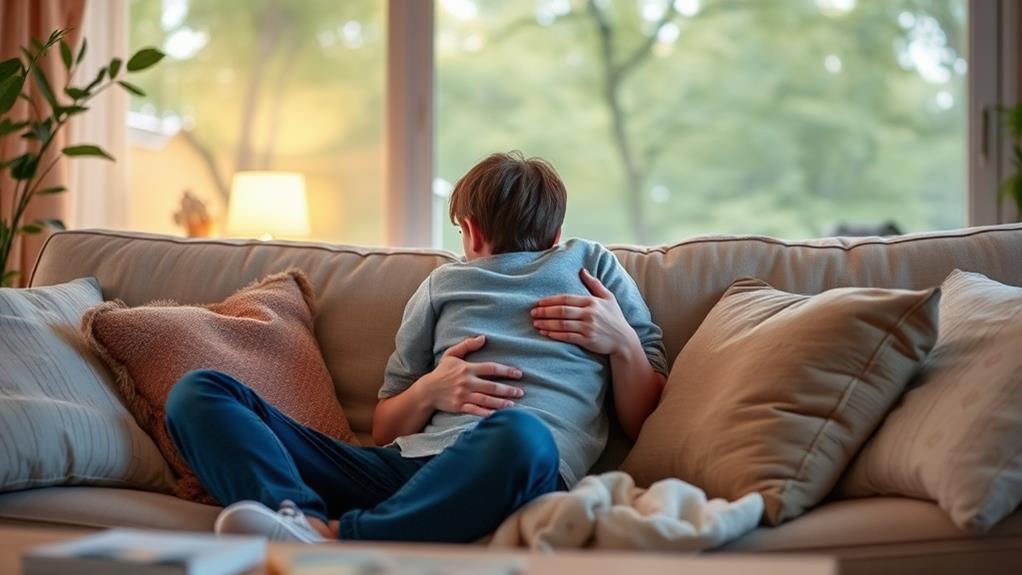
Parents often find themselves in a challenging position when their child experiences panic attacks or heightened anxiety. You want to support them, but it can feel overwhelming.
First, it's crucial to stay calm. Your demeanor sets the tone for your child. When you remain composed, it helps them feel safer and more secure.
Next, educate yourself about panic attacks. Understanding what your child is experiencing can empower you to respond effectively. Talk to your child about their feelings, and encourage open communication. Let them know it's okay to express themselves without judgment.
Establish a routine that includes regular relaxation practices, like deep breathing or gentle exercises. These can help create a sense of stability in your child's life.
Also, consider reaching out to professionals for guidance. Therapists and counselors can provide valuable insights and coping strategies tailored to your child's needs.
Techniques for Children
When kids face panic attacks, having effective techniques at their fingertips can make a significant difference. One helpful method is deep breathing. Encourage your child to inhale slowly through their nose, hold for a few seconds, and exhale through their mouth. This can help calm their racing heart and reduce anxiety.
Another technique is visualization. Ask your child to imagine a peaceful place, like a beach or a garden. Visualizing this calming environment can help distract them from their feelings of panic.
Grounding exercises can also be beneficial. Teach your child to focus on their surroundings by identifying five things they can see, four they can touch, three they can hear, two they can smell, and one they can taste. This helps bring them back to the present moment.
Lastly, encourage positive self-talk. Help your child create affirmations they can repeat during a panic attack, like, "I'm safe, and this will pass."
These techniques empower your child and give them tools to manage their feelings. Remember, practice makes perfect! The more they use these techniques, the easier it'll become to handle panic attacks when they arise.
When to Seek Professional Help
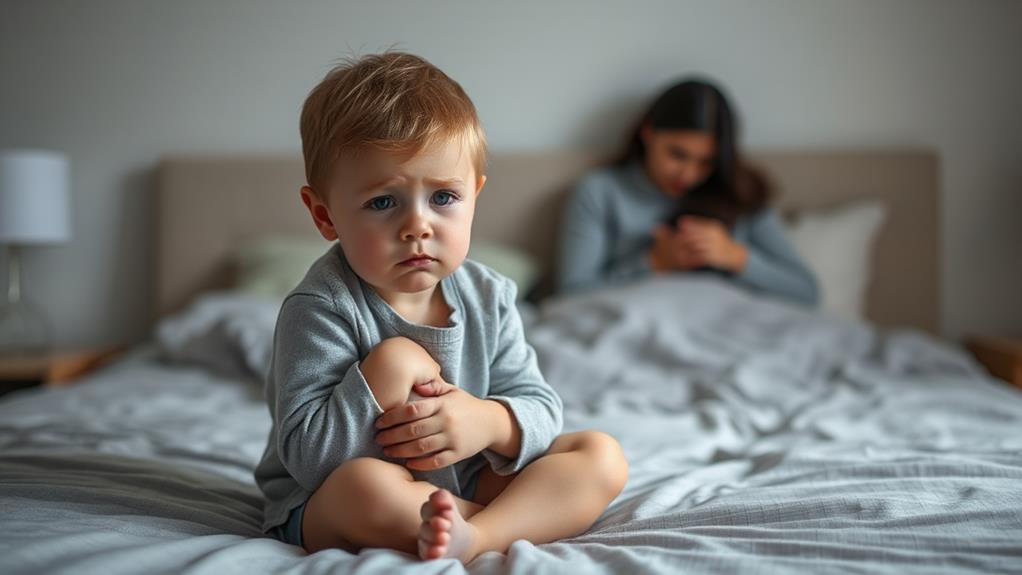
Recognizing the signs that a child might need professional help can be challenging, especially after implementing techniques like deep breathing and visualization. If you notice that your child's panic attacks are becoming more frequent, intense, or prolonged, it's time to consider seeking help.
When coping strategies aren't enough, you might see signs like severe avoidance of certain situations, persistent anxiety that disrupts daily activities, or physical symptoms like headaches and stomachaches.
Another red flag is if your child expresses feelings of hopelessness or helplessness. If they start withdrawing from friends or family, losing interest in activities they once enjoyed, or having trouble concentrating at school, those are significant indicators too.
It's important to trust your instincts. If you feel overwhelmed or unsure, don't hesitate to reach out to a mental health professional.
Therapists or counselors can provide tailored strategies and support, helping your child develop healthy coping mechanisms. Remember, seeking help isn't a sign of failure; it's a proactive step towards ensuring your child's emotional well-being.
Prioritize their mental health, and you'll be setting them up for a brighter future.
